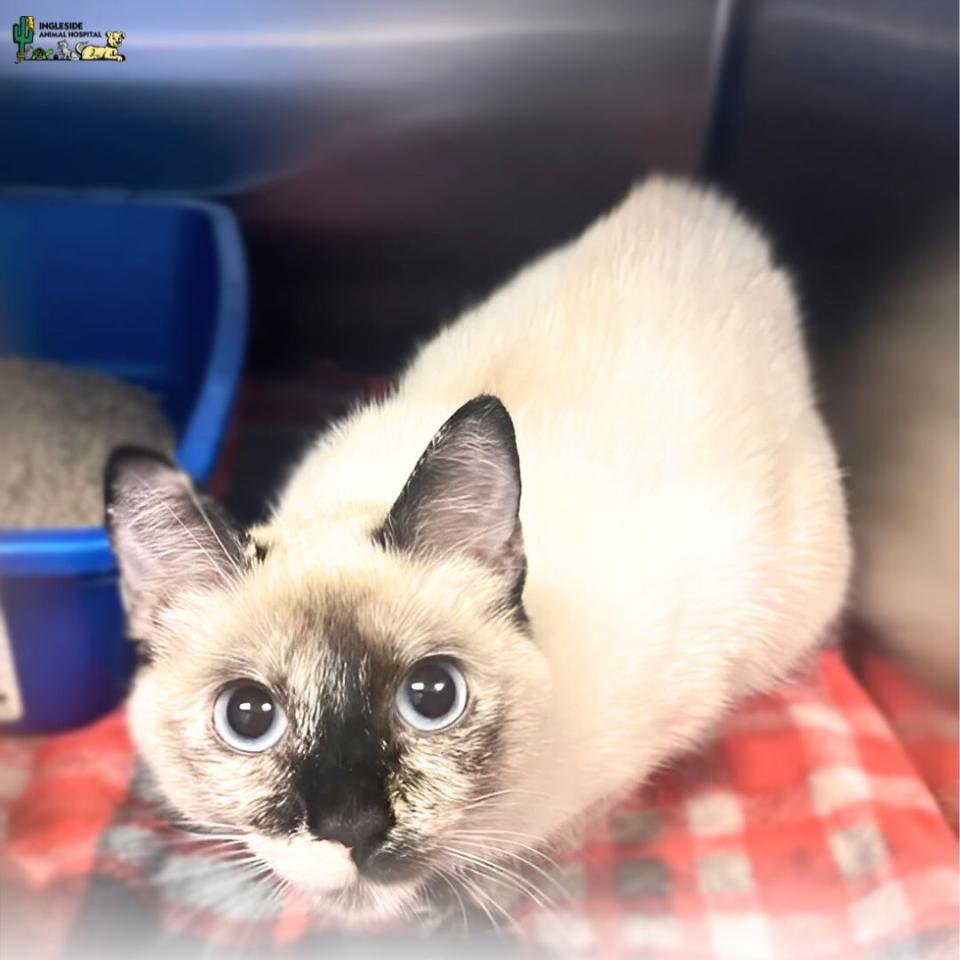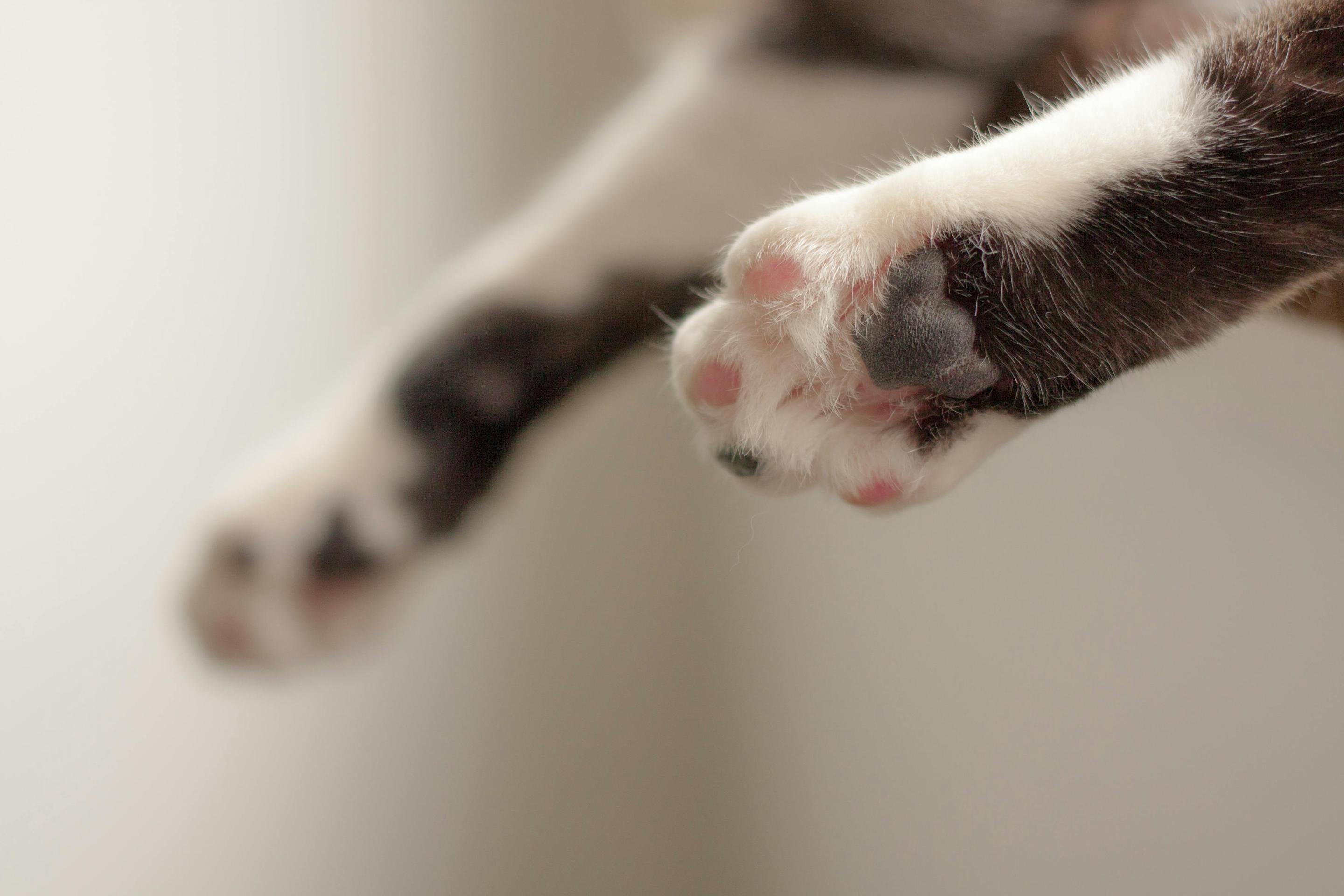
What is Declawing a Cat?
Declawing a cat is a procedure that involves the third bone of a cat's paw being surgically removed. Cat declawing is also referred to as an onychectomy. A cat's claw is permanently affixed to their knuckle, so declawing a cat means removing a part of their knuckle.
There are three medically approved ways of declawing a cat:
- Blade Declawing - An instrument with a sliding blade cuts a straight line through the joint between the entire claw growth and the rest of the cat's paw. This is the most common method of declawing kittens or adult cats and is the most invasive.
- Laser Declawing - A laser is used to remove the third bone of the cat's paw. Laser declawing is usually more expensive than blade declawing, but laser declawing results in less bleeding during surgery, as well as less pain and shorter recovery time.
- Cosmetic Declawing: A tiny, curved blade dissects out the claw and the tiny piece of the bone the claw is affixed to. Because the soft tissue and paw pad remains intact, and similar to laser declawing, there is less post-surgery discomfort and quicker recovery time versus blade declawing. This is a more precise and time-consuming procedure compared to blade declawing.
Pet owners may choose to declaw a cat for various reasons, typically involving unwanted behaviors associated with the cat's claws. However, there are many alternatives that are worth considering before declawing a cat. These alternatives should first be explored if you want to declaw your cat due to reasons other than the potential medical benefit it may have.

Alternatives to declawing cats
There are several alternatives to declawing cats, although effectiveness may vary depending on a cat's age and temperament. Some of the more prevalent alternatives to declawing cats are:
- Behavioral Training: This is a much more effective alternative for kittens than adult cats and involves redirecting a misbehaving cat to a toy or scratching post.
- Soft Claws: These are vinyl nail caps for cat claws that are applied with surgical adhesive, and to which cats usually get used to within a few days. This requires a patient and dedicated owner, but it is a reasonable alternative to declawing.
- Frequent Nail Trimming: This is a less effective, but nonetheless widely used alternative to declawing cats. It involves trimming the nails very short. However, this method will not stop a cat from sharpening its existing claws and using them.
- Toys/Scratching Post: This might be a foregone conclusion in the eyes of some cat owners, but it is very important to have sufficient options for feline recreation and respite. Some cats are very particular, so make sure the equipment you invest in has your feline friend's seal of approval.
- Synthetic facial pheromone sprays/diffusers: Consider using synthetic facial pheromone sprays and/or diffusers to help relieve anxiety or stress, which may or may not be related to your cat's scratching behavior. Apply a synthetic pheromone spray on the objects or areas in your home where your cat has exhibited undesired scratching.
- Appropriate environmental enrichment: Cats are natural hunters and explorers. When we make them indoor pets, they can experience stress if not provided with an enriched environment full of outlets for their inquisitive, playful energy. An enriched environment includes providing things like scratching surfaces, toys, cat trees and more.
Does declawing a cat affect its personality?
Numerous studies that have researched a potential correlation between cat declawing and personality changes strongly indicate that none exists. Please remember that it may take your cat a little time to feel comfortable walking on surgically sensitive paws, which could indeed affect his or her personality traits and behaviors during the recovery period. Therefore, it is always important to be nurturing and supportive during the recovery process, in order to help facilitate a speedy recovery.
Should declawed cats be allowed to go outside?
Letting your cat outside after he or she is declawed could be dangerous, because declawing a cat takes away the ability to defend themselves. Therefore, cat owners of declawed cats should be committed to keeping their feline friend indoors for the rest of its life.
Schedule an appointment to discuss options with your veterinarian
At Ingleside Animal Hospital, our veterinary team has provided education and insight to help many concerned and caring cat owners decide if declawing a cat is the right decision to make. If you are looking into cat declawing surgery, or have any questions about declawing cats, please contact us to schedule an appointment with a member of our veterinary team today.
Cat Declawing FAQs
Dr. Courtney Parker
Ingleside Animal Hospital
Hi, my name is Dr. Parker. I'm with Ingleside Animal Hospital. I'm an associate veterinarian here. Today we have Mr. Virgil with us, and we will talk a little bit about a declaw procedure in kitty cats. Declawing cats is never medically recommended or medically necessary for the cat. It is a completely elective procedure that is done only for cosmetic reasons or because the human in the household would like their kitty cat not to have their claws for a variety of reasons. The only medically necessary procedure that would ever require us to declaw them would be if there were a tumor growing off of that distal toebone in their toe. A declawing procedure involves removing the first digit bone, which is P3, the distal most phalanx. Our fingers and toebones conist of phalanges. These are P1, P2, and P3. It's no different in cats, but their P3 has a claw attached to it.
Because it's attached to the bone, unfortunately, we have to amputate the whole end of the toe to complete the declaw procedure. That completely changes the way that kitty cats walk on their feet because instead of walking on that distal most or furthest away digit, they're walking on incorrect bones, leaving them at risk for arthritis as they age and sensitivity to different surfaces. We can see cats develop pain in litter boxes or on carpets. Walking on those surfaces can cause significant pain for our feline friends, and they get averted to those surfaces. That's why, as our declawed cats age, we can see them start to inappropriately urinate or defecate around the house because it literally hurts for them to walk into their litter box.
There are lots of alternatives to declawing. These are my personal favorites. They're little kitty soft claws, as they're called. They are things that we can glue onto the cat's nail directly after their nail has been trimmed, and it's pretty difficult for them to pull those off. We can certainly apply that at a technician appointment for you guys. Every four to six weeks is recommended for these little soft claws, so I recommend these and appropriate scratching toys over any delaw procedure just because it causes so many long-term issues for our cats. Thank you.
If you still have other questions and you'd like to reach out to us, you can call us directly at (602) 840-3446
For more than five decades, families from greater Phoenix, Arcadia, Paradise Valley, Tempe, and Scottsdale in Arizona have come to rely on our trustworthy and compassionate care. As an AAHA-accredited, Fear Free, and Cat Friendly facility, your pet’s well-being and comfort are our highest priorities.

